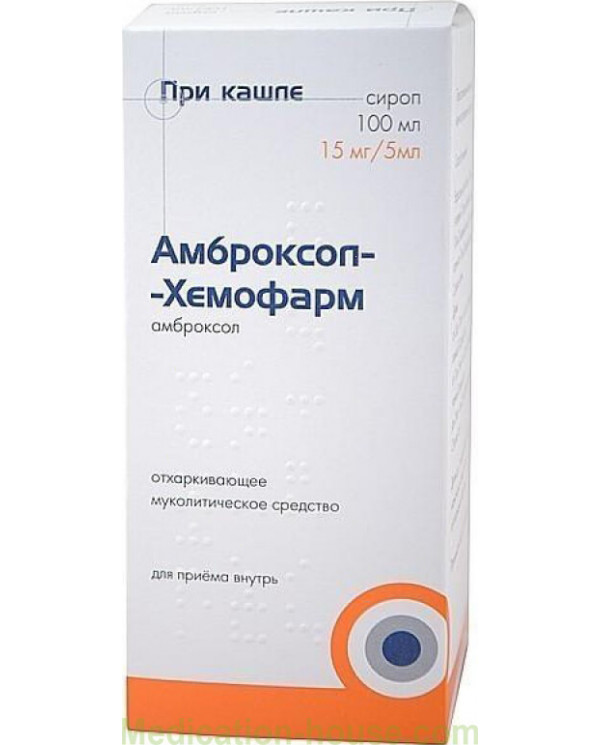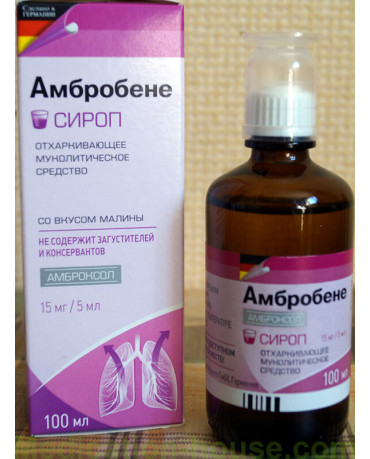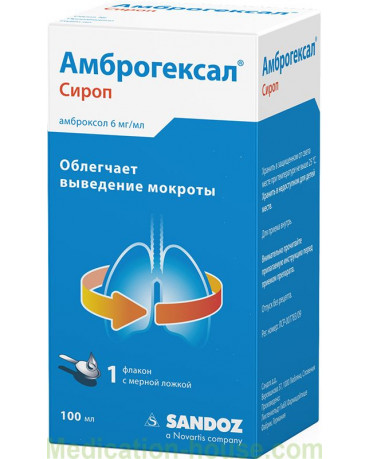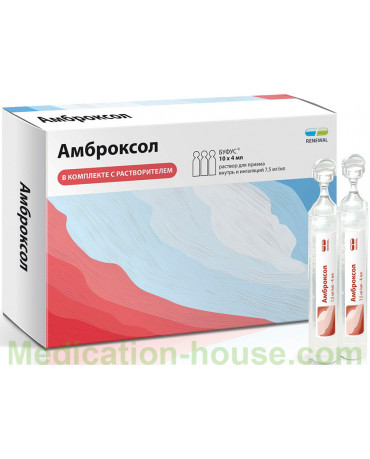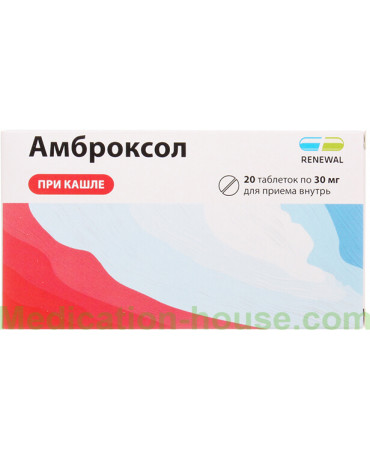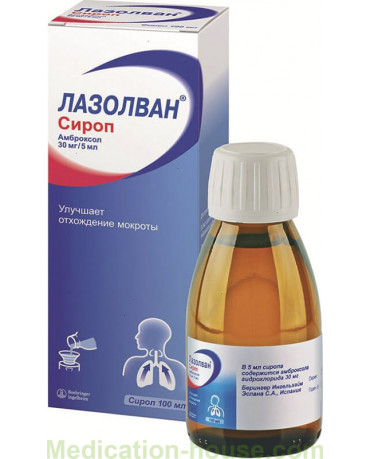Ambroxol syrup user manual
Reed more and buy Ambroxol syrup on this page
Cough is a protective reaction of the body that cleanses the trachea and bronchi from mucus, sputum, blood, foreign bodies. It is not recommended to suppress the cough reflex, it is necessary to help the body get rid of harmful agents. For this, the pharmaceutical market offers a wide selection of various mucolytic and expectorant medicines, among which Ambroxol syrup, produced in Serbia, is popular.
Indications for admission
Ambroxol syrup is used to treat bronchopulmonary diseases in adults and children, which are accompanied by dry or wet cough with difficult removal of sputum.
It is used for the following pathologies:
chronic and acute bronchitis, including obstructive;
bronchial asthma, proceeding with a difficult waste of secretion;
all types of pneumonia;
cystic fibrosis;
tracheitis;
suppurative processes in the bronchi (bronchiectatic disease);
laryngitis (inflammation of the larynx);
pharyngitis (inflammation of the pharynx).
In neonatology, it is used to treat respiratory distress caused by underdevelopment of lung tissue in infants.
Limitations
The drug has the following strict restrictions:
hypersensitivity to the ingredients;
convulsive syndrome;
secretion in large quantities;
violation of the motility of the bronchi caused by the abnormal development of the ciliary epithelium (fixed cilia syndrome). As a result of the pathology, the exit of mucus is difficult, which threatens stagnation of sputum. This slows down treatment and causes severe complications.
The drug is taken with caution in exacerbation of peptic ulcer, liver and kidney pathologies. In these cases, it is recommended to reduce the dose or increase the interval between doses of the drug.
During pregnancy
In the first trimester of pregnancy, when the vital organs of the baby are laid, and the placenta does not yet have sufficient protective properties, any medication is contraindicated. Studies regarding the effect of syrup Ambroxol on the fetus have not been conducted, therefore, the drug is contraindicated in the first 3 months of pregnancy. In the 2nd and 3rd trimesters, admission is allowed with caution, after consulting a doctor.
Lactation
It has been proven that syrup Ambroxol passes into breast milk. But it is not known how he will affect the child. To minimize side effects immediately after taking the syrup, it is recommended to feed the baby, and the next should be done no earlier than after 6-8 hours. Thus, the baby with the mother’s milk will get a minimum amount of a chemical.
Mechanism of action
Ambroxol syrup is considered a strong mucolytic with an expectorant effect. It has the following effect:
Reduces sputum viscosity. This happens in two ways: mucus proteins are broken down, and at the same time, the production (production) of the liquid component of sputum, serous, is enhanced.
Stimulates the ciliary apparatus of the respiratory tract, which improves the discharge of bronchial secretions.
It stimulates the production of surfactant, a substance that is located in the alveoli of the lungs and prevents their subsidence. Thanks to this, syrup Ambroxol helps restore difficulty breathing.
When taking the drug orally, the effect is observed after half an hour and lasts 6-12 hours. The highest concentration of Ambroxol in the blood occurs after 1.5-2 hours. Then the substance enters the lung tissue. The drug is excreted by the kidneys.
Medicinal composition
Ambroxol syrup, a drug with high bioavailability (digestibility), is based on Ambroxol hydrochloride and Bromhexine Metabolite. How additional components are used:
benzoic acid;
glycerol;
hydroxyethyl cellulose;
water.
To give the medicine a pleasant aroma and sweet taste, sorbitol and raspberry flavor are included in the composition.
Instructions for use
The syrup, transparent in color, is packaged in dark plastic bottles with a capacity of 100 ml. For ease of dispensing, a 5 ml volumetric spoon is in a cardboard box. The drug is taken after meals in the dosage indicated in the instructions according to the age of the patient. Children who are under the age of 1 year, Ambroxol can appoint only a pediatrician. The recommended duration of use is 5 days.
Side effects
In rare cases, the drug causes a number of side effects. From the gastrointestinal tract possible: dry mouth, stool disturbance (diarrhea or constipation). When taking large doses and long-term treatment, nausea, vomiting, gastralgia, heartburn were observed. In such cases, it is necessary to rinse the stomach, induce artificial vomiting, take fat-containing products.
Itching, a rash on the skin in the form of urticaria or exanthema, allergic reactions that cause fever, chills, dermatitis may appear; rare cases of angioedema and anaphylactic shock were recorded. Other adverse reactions include weakness, fever, headaches, an upset taste, nasal mucus (rhinorrhea), and urination problems (dysuria).
In addition, side effects sometimes occur with the simultaneous use of Ambroxol syrup with other medications, for example, with drugs that inhibit the cough reflex. In this case, stagnation of sputum may be observed. Cough syrup is able to increase the concentration of certain antibiotics from the group of penicillins, tetracyclines, and cephalosporins in the blood.
In most cases, syrup Ambroxol has a safe effect on the body, and medical advice and compliance with the instructions for use minimize the risk of side effects.
Terms of sell
You can buy Ambroxol syrup without a prescription.

